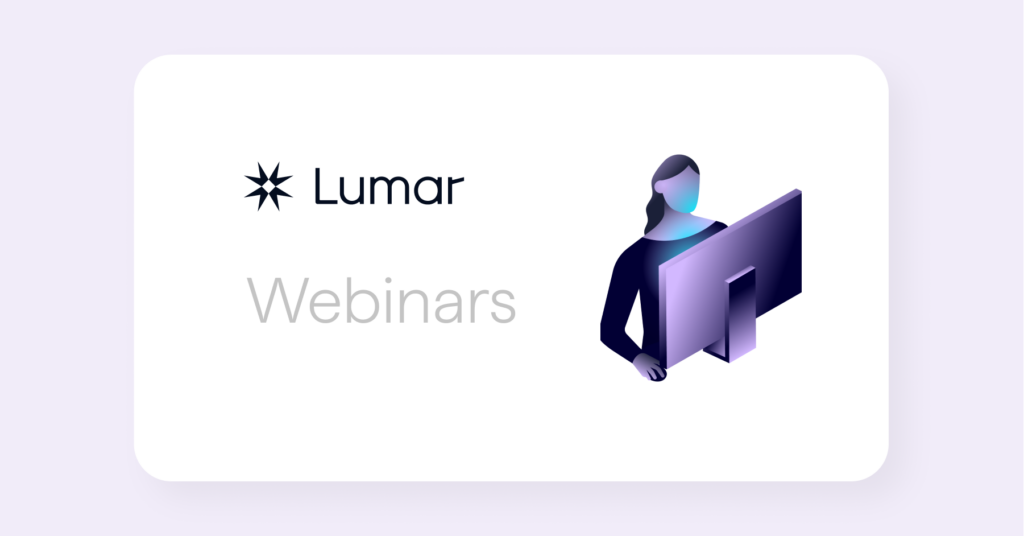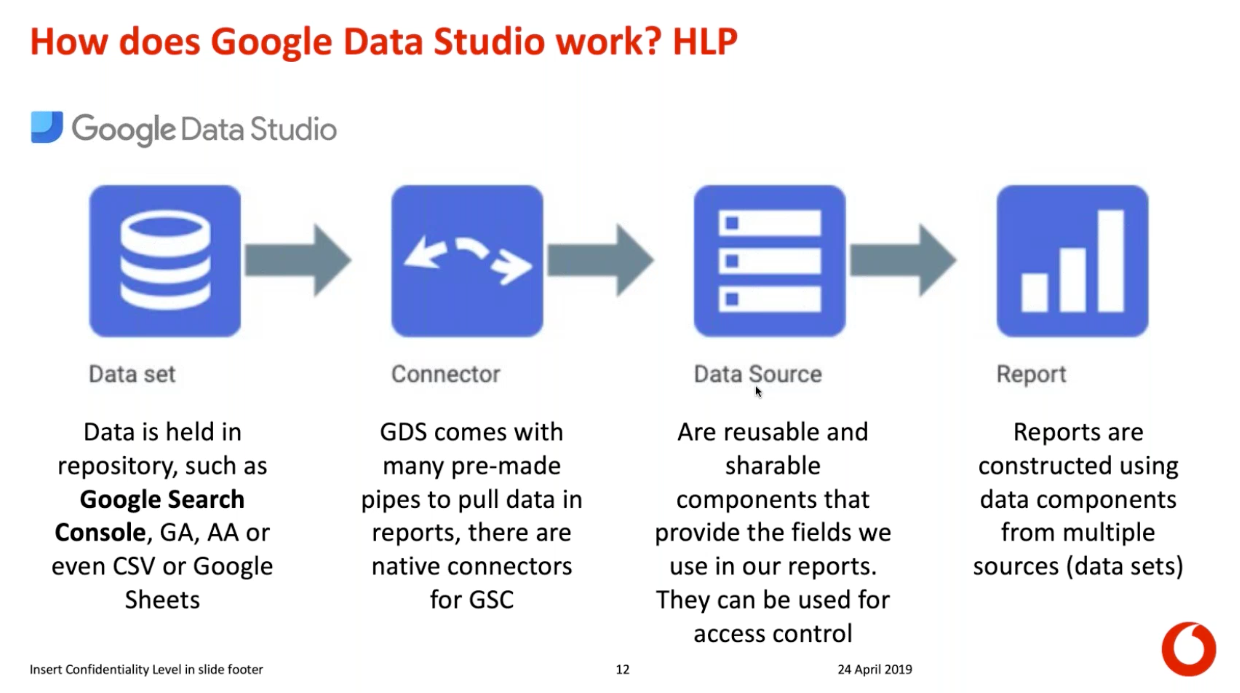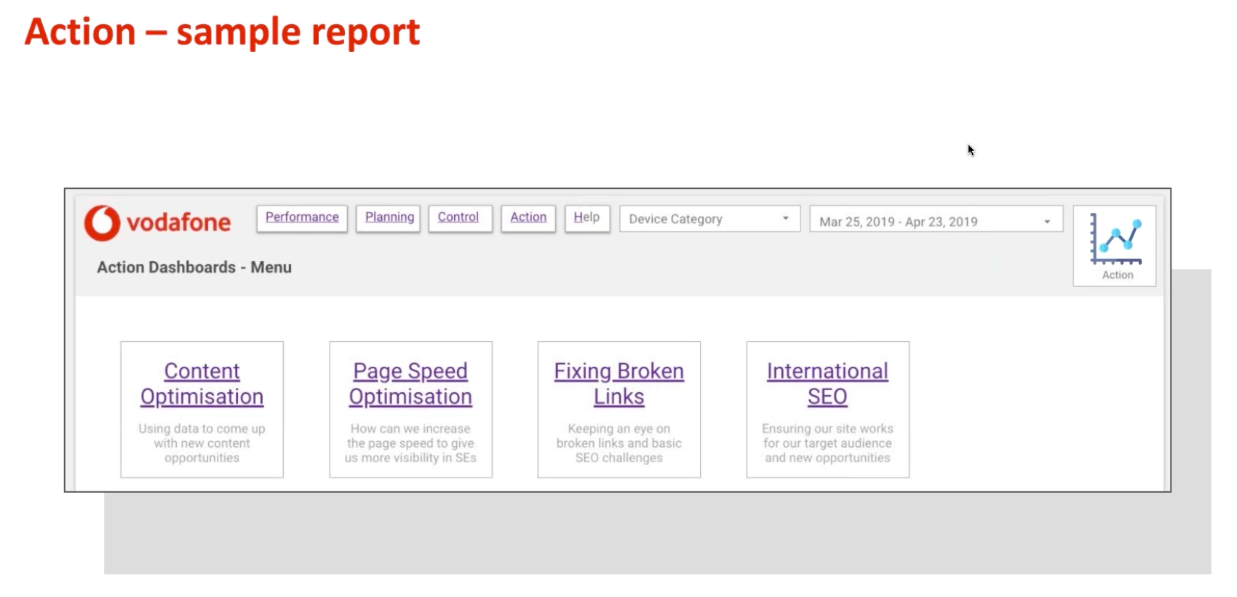For this month’s DeepCrawl webinar we were honoured to host, Vodafone’s Search Product Owner and DeepCrawl CAB, Nick Wilsdon, to learn about using dashboarding effectively within enterprise businesses.
You can watch the full recording here:
Key challenges in enterprise organisations
Nick has a very strategic role within Vodafone and owns its search function across 22 markets. Working for such a large organisation, Nick has identified five key challenges faced at this level:
- Reporting is required for stakeholders at multiple levels, whether it be SEO teams, team leaders, senior or board level stakeholders.
- Standardisation can be a challenge across a business operating in many countries. Each market can be like a separate business in its own right, with different metrics, business units, stacks, and ecommerce environments.
- Processes have to be automated as much as possible to meet the scale of a large company.
- Budgets need to be spent as efficiently as possible, especially with tools being exceedingly expensive at the enterprise level.
- Analytics and Data teams are busier than ever. Everyone wants data and analytics, so it is very hard to get their time and expertise for reporting to work.
How has Vodafone overcome these challenges?
Nick started building dashboards in Google Data Studio as a way of overcoming the above challenges with regard to reporting.
To build these dashboards, Nick used data pipelining to take data from different toolsets and push it into a visualisation layer, like Google Data Studio.
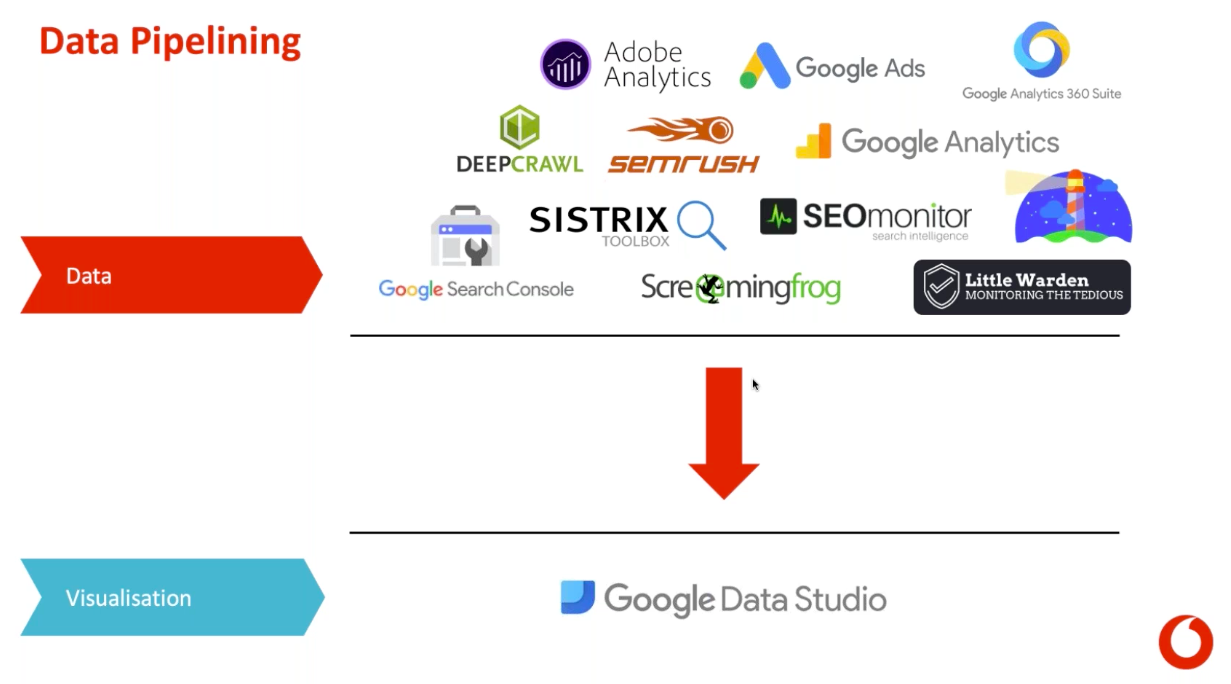
Google Data Studio works by taking data sets held in a repository, like Google Search Console or Analytics, pulling them into Data Studio via connectors and creating components from these data sources to populate reports.
Starting with Google Search Console
When starting off with SEO dashboards, Nick recommends starting with Google Search Console as it’s free and accessible, has a relatively poor native user interface and has recently introduced a new way of managing domain properties.
By visualising Google Search Console data in custom Data Studio dashboards you can report on things like:
- Top level organic trends.
- Top performing pages and queries in search.
- Biggest wins and losses in terms of clicks, impressions and click-through rates.
- Performance for branded and non-branded search trends.
- Directory-level performance.
- Performance of pages being linked to as fraggles (jumplinks) in search.
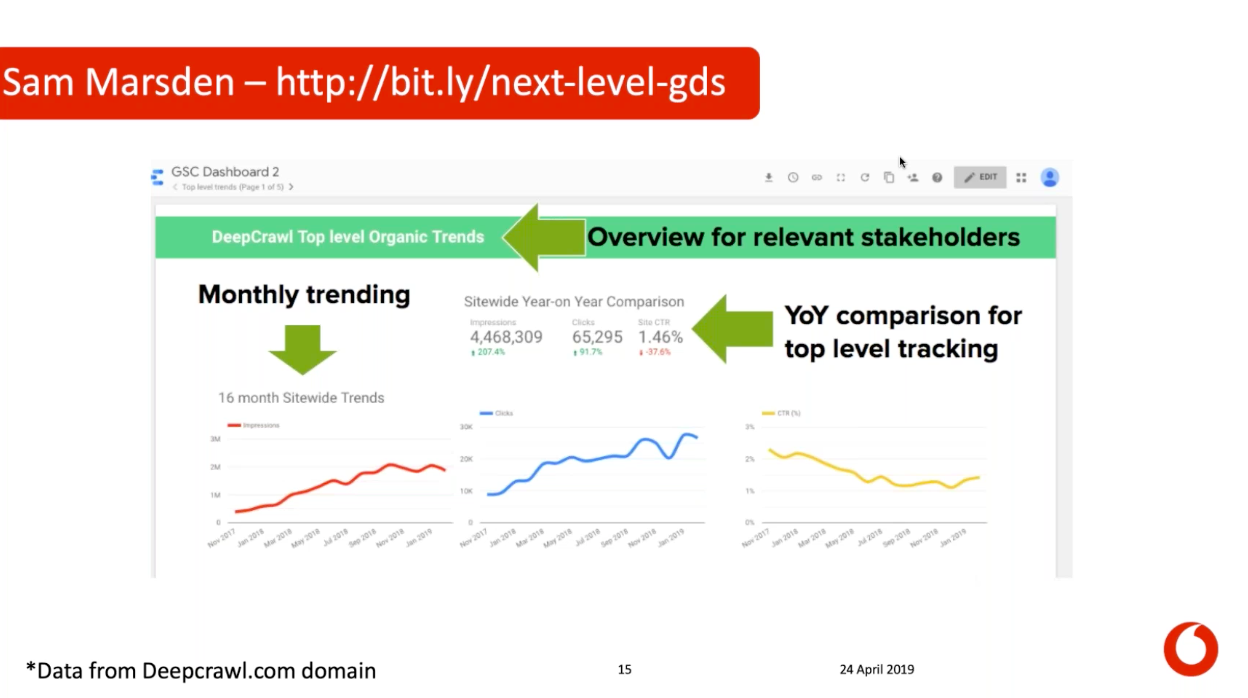
Once you’ve started visualising Search Console data, Nick recommends thinking about how you can blend different data sources together, such as keyword data from SEOmonitor.
Reporting structure and strategy
It’s important that you don’t just create some pretty graphs, you need to form a strategy around dashboarding to make sure it is widely adopted.
Each of Vodafone’s Data Studio reports consists of four sections:
- Performance
- Planning
- Control
- Action
Each of these areas are marked with icons that indicate who each of the reports are for, so different stakeholders know they are looking at the metrics that are relevant to them.
The dashboards also include links that allow you to navigate through different reports and essentially turns Data Studio into a mini-application.
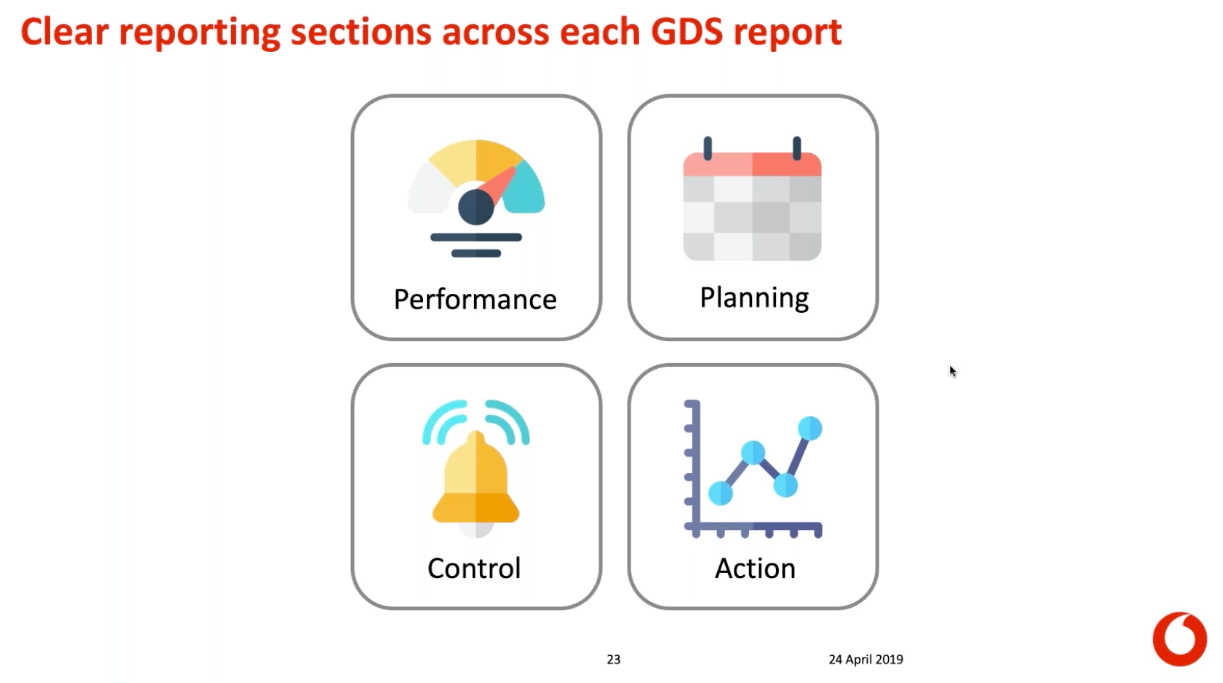
Performance
The Performance section of Vodafone’s dashboards is for senior stakeholders to support internal reporting around commercial objectives, and focuses on some of the following metrics:
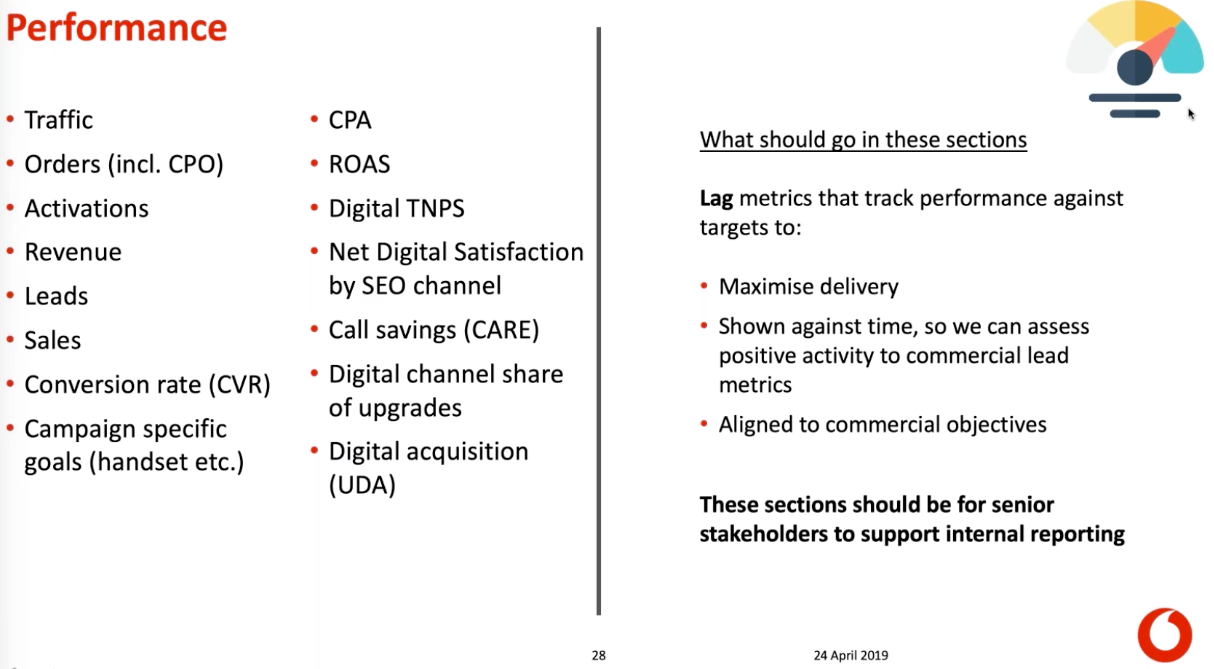
Planning
The Planning section of Vodafone’s dashboards is very much aimed at team leaders and focuses on:
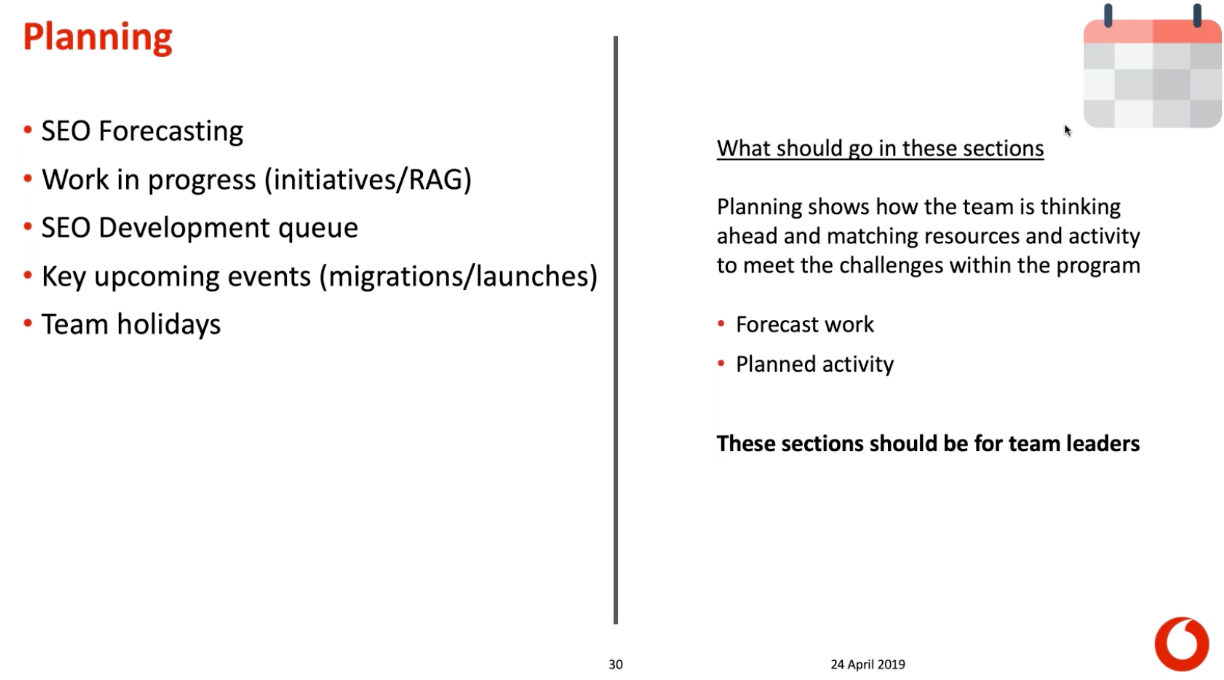
Control
The Control section is important from a strategic perspective because there are metrics that SEOs should know about but shouldn’t be made visible to other areas of the business. It is important to keep some metrics hidden from non-SEOs so they can’t be misinterpreted e.g. rankings and Google impressions.
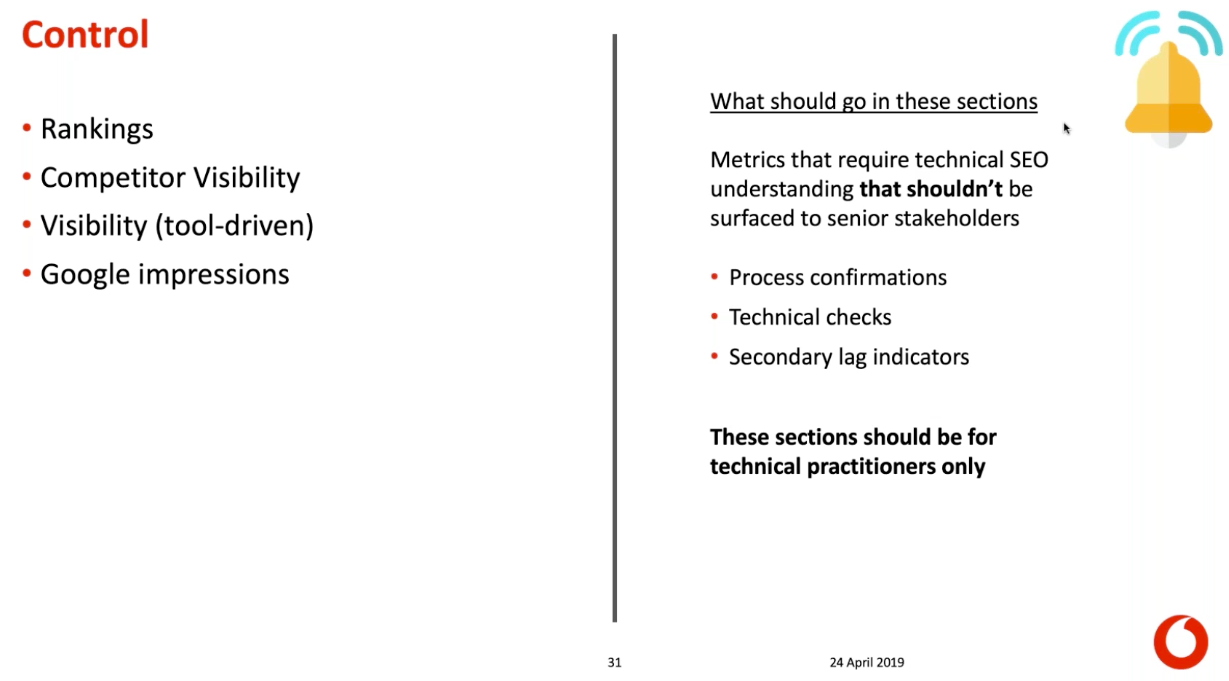
Action
This section is also for technical practitioners only, and looks at the outputs from data sources e.g. crawl data and site errors. The aim of the Action section of Vodafone’s dashboards is to generate actionable data to address specific SEO challenges.
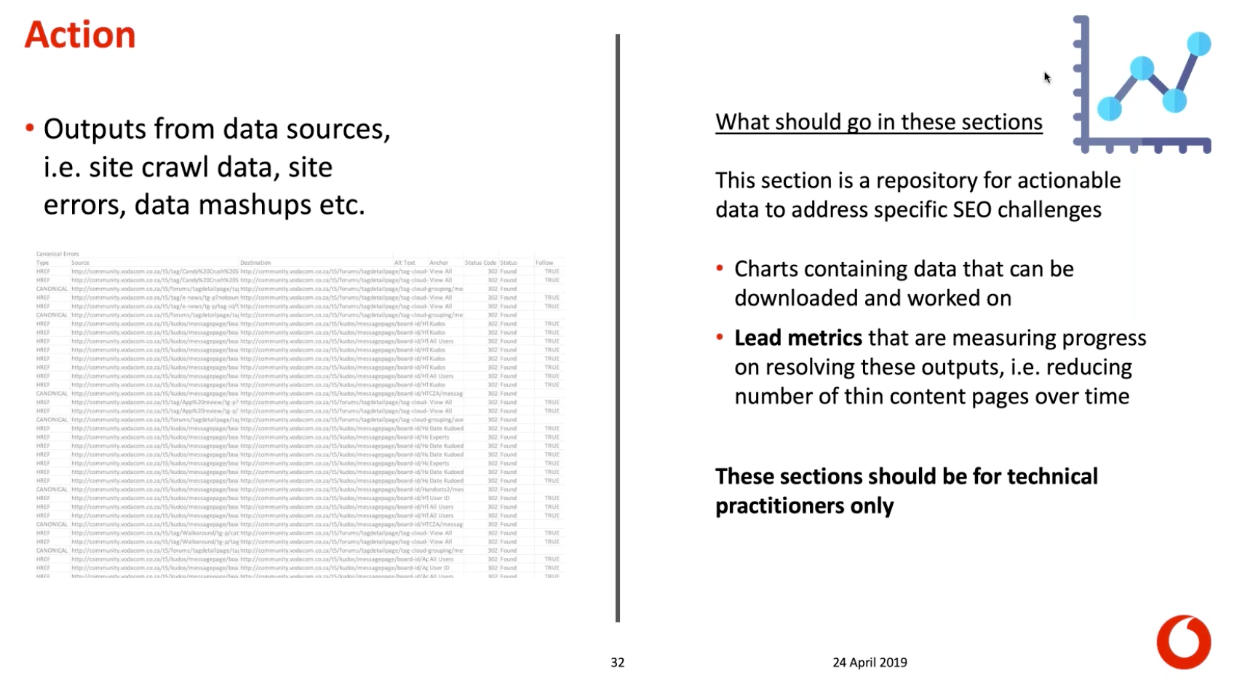
An example Action report shows links to various SEO initiatives, such as page speed optimisation, which itself show relevant charts and graphs which can be downloaded back into Excel for further exploration.
Overcoming key enterprise challenges
Revisiting the five key challenges that enterprise businesses face, Nick showed how he and the Vodafone team have managed to overcome them:
- A common reporting structure was key. Senior stakeholders like knowing which reports to look at and the added level of organisation means teams are clear on the metrics that are relevant to them.
- Different markets and teams may use different toolsets, but delivering an internal toolset has driven standardisation.
- There is now a process in place to drive automation, which is crucial.
- Taking a data-first approach has reduced costs and increased capability. Nick is now more interested in tool APIs rather than their UIs. The data is important, not the interface, not least because using APIs reduces cost.
- Community-driven data analysis and mashups have lessened the need for the time of the Analytics and Data teams at Vodafone.
Where do we go next?
Now that Nick has successfully put a process in place for automation and dashboarding, he wants to take this to the next level by:
- Developing the ecosystem between the group and the OpCo (Operating Company). SEO is becoming a use case for data pipelining around the organisation and Nick wants to roll this out more widely within Vodafone.
- Improving the portability of data between teams to share things like footfall, cost per store visit, internal search, and Google Ads data.
- Using advanced data processing in the Google Cloud platform using tools like Google Natural Language processing.
Learn more from Nick in our upcoming Q&A post
The audience submitted so many questions that Nick wasn’t able to answer them all live during the webinar. Don’t worry if your question wasn’t answered though, we sent the rest to Nick to answer offline and we’ll be publishing his answers in a Q&A post shortly.
If you can’t wait until the Q&A post, then head over to our guide to automating SEO reporting to learn more about dashboarding and Google Data Studio.
